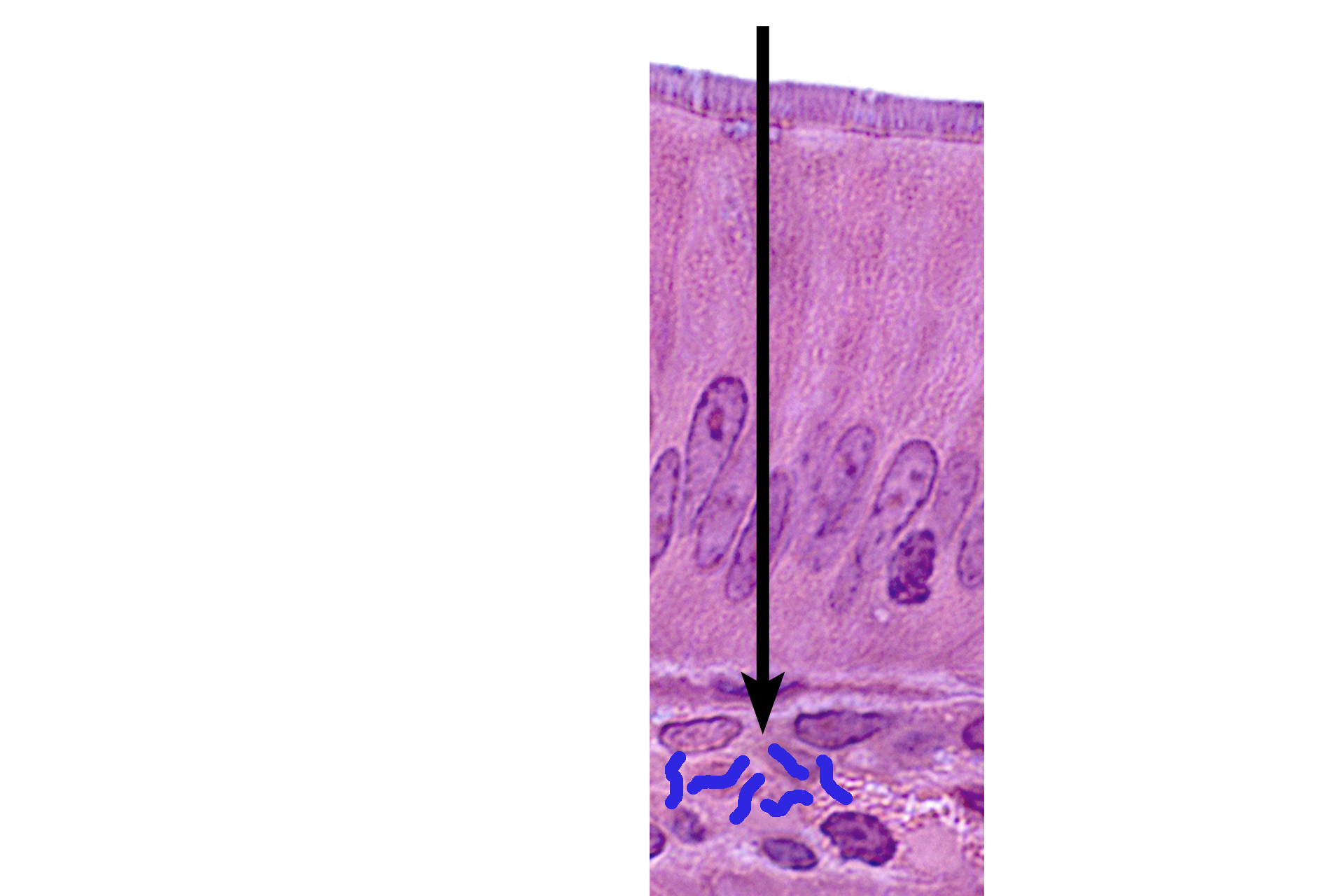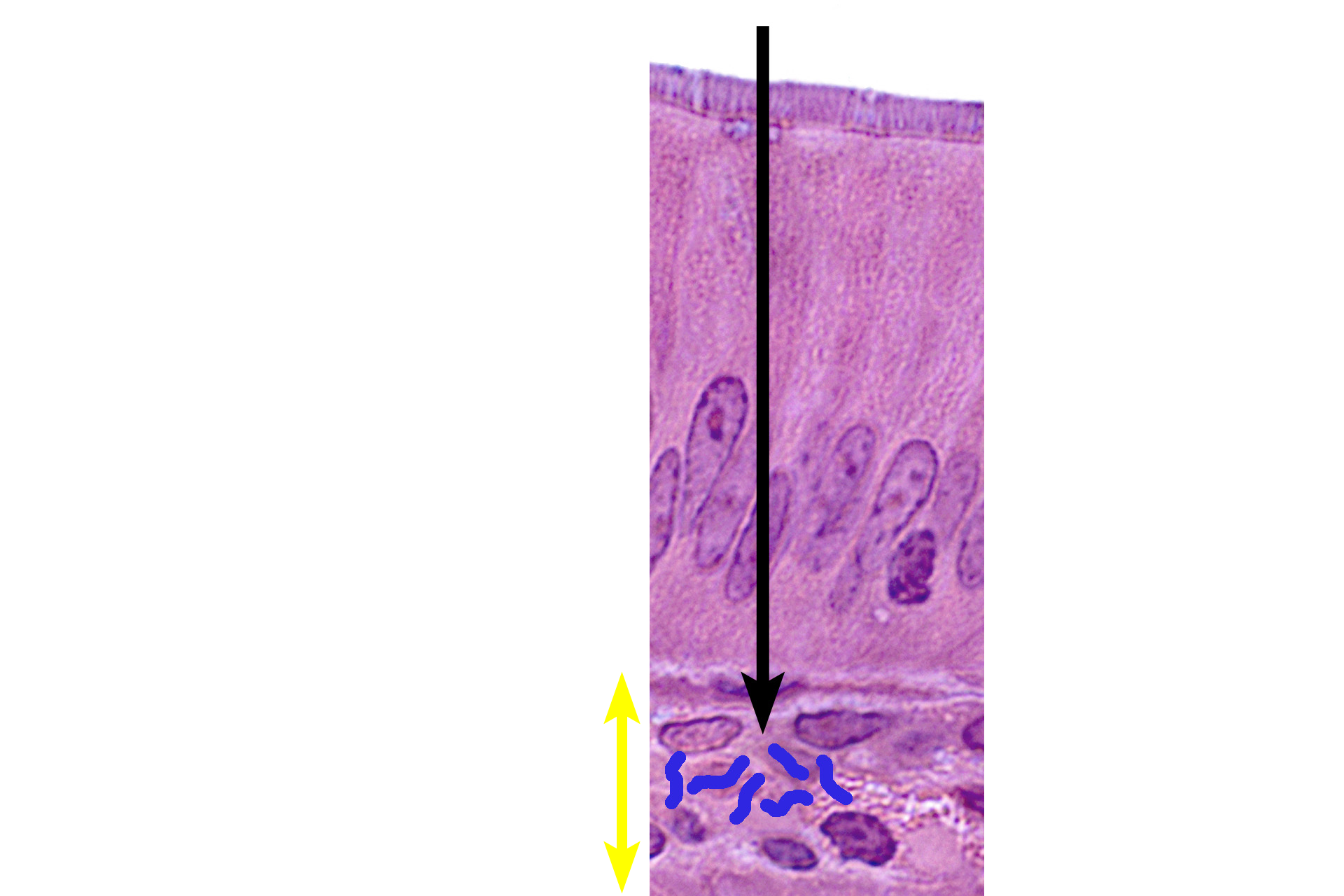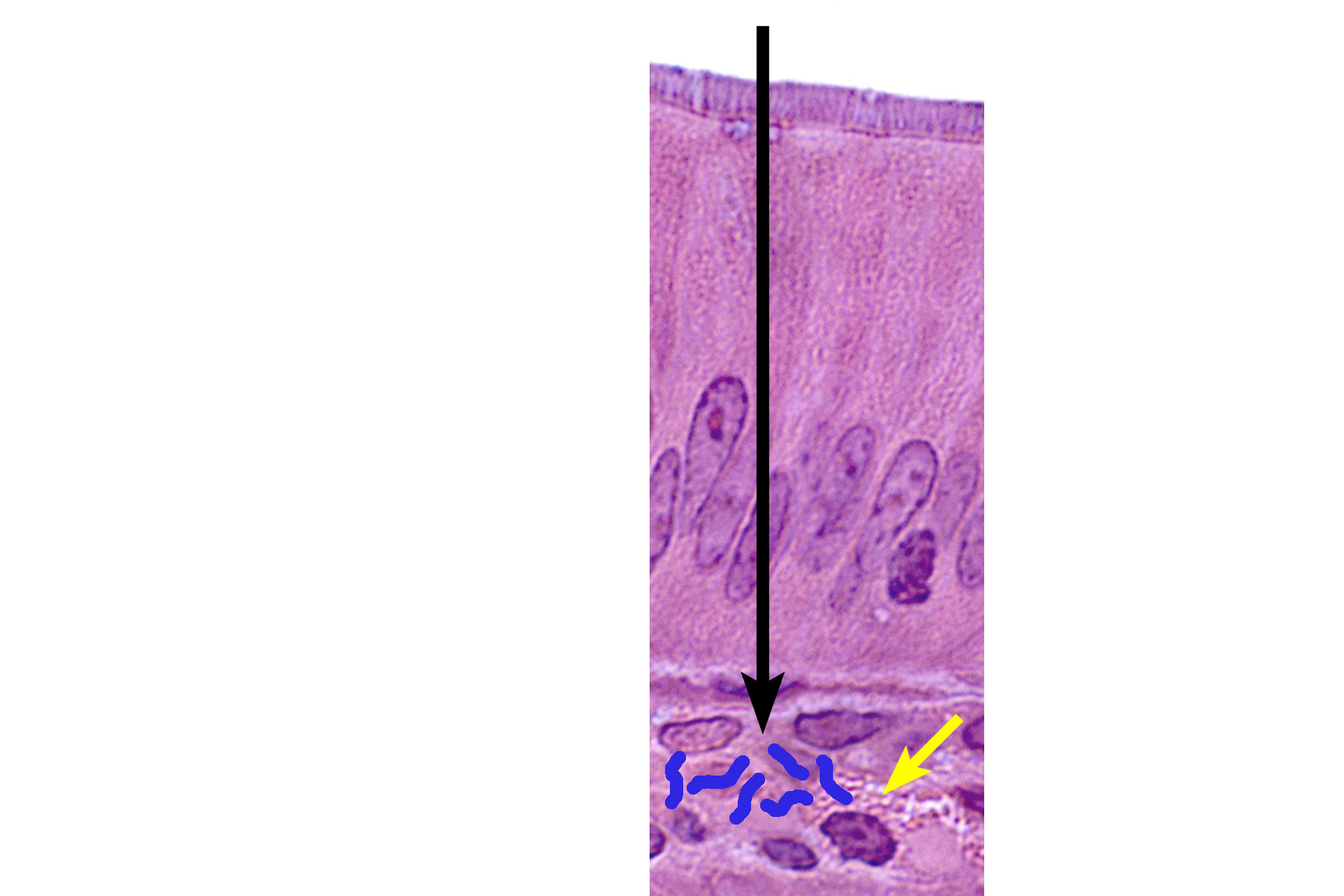
Overview: Innate immunity
Epithelial membranes, such as the epidermis of skin or mucosae lining internal organs, e.g., the digestive system (shown above), serve as physical barriers against entry of pathogens and toxins. Epithelia are a components of the innate immune system that are present at birth and form the so-called “first line of defense”. 1000x

Epithelial barrier >
The epithelium provides a physical barrier to microbe entry along with secretions on its surface, such as digestive enzymes and stomach acid that destroy microorganisms. Epithelia may also contain wandering immune cells, like macrophages, that provide local protection through phagocytosis and recruitment of additional immune cells.

- Microbes
The epithelium provides a physical barrier to microbe entry along with secretions on its surface, such as digestive enzymes and stomach acid that destroy microorganisms. Epithelia may also contain wandering immune cells, like macrophages, that provide local protection through phagocytosis and recruitment of additional immune cells.

- Macrophages
The epithelium provides a physical barrier to microbe entry along with secretions on its surface, such as digestive enzymes and stomach acid that destroy microorganisms. Epithelia may also contain wandering immune cells, like macrophages, that provide local protection through phagocytosis and recruitment of additional immune cells.

Microbe entry >
If microbes penetrate the epithelium they enter a connective tissue layer, such as the dermis of skin or lamina propria of a mucosa. There, they are met with a variety of internal defenses consisting of phagocytic and natural killer cells as well as chemical defenses including complement activation and inflammation. All these defenses are components of the innate immune response.

Lamina propria >
The lamina propria contains phagocytic macrophages, natural killer cells and mast cells, all of which are components of MALT (mucosa-associated lymphoid tissue). Immune cells in the lamina propria may also initiate an adaptive immune response which is slower to develop but highly specific for a particular antigen.

- Mast cell >
Mast cells contain cytoplasmic granules that are released in response to contact with microbes or antigens, eliciting an allergic reaction.